-
Product Name
Anti-DDIT3 Mouse antibody
- Documents
-
Description
DDIT3 Mouse monoclonal antibody
-
Tested applications
IHC-P, ICC/IF, FC
-
Species reactivity
Human
-
Alternative names
CHOP; CEBPZ; CHOP10; CHOP-10; GADD153 antibody
-
Isotype
Mouse IgG2a
-
Preparation
Antigen: Purified recombinant fragment of human DDIT3 (AA: 87-192) expressed in E. Coli.
-
Clonality
Monoclonal
-
Formulation
Purified antibody in PBS with 0.05% sodium azide.
-
Storage instructions
Store at 4°C short term. Store at -20°C long term. Avoid freeze / thaw cycle.
-
Validations
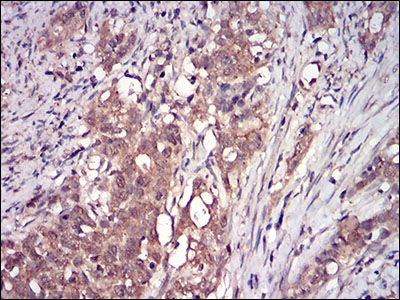
Immunohistochemical analysis of paraffin-embedded cervical cancer tissues using DDIT3 mouse mAb with DAB staining.
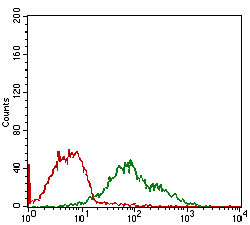
Flow cytometric analysis of MCF-7 cells using DDIT3 mouse mAb (green) and negative control (red).
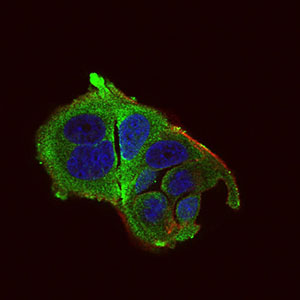
Immunofluorescence analysis of MCF-7 cells using DDIT3 mouse mAb (green). Blue
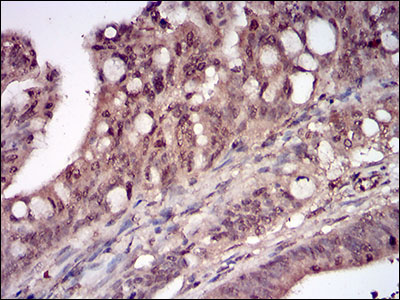
Immunohistochemical analysis of paraffin-embedded rectum cancer tissues using DDIT3 mouse mAb with DAB staining.

Western blot analysis using DDIT3 mAb against human DDIT3 (AA
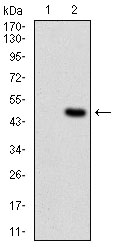
Western blot analysis using DDIT3 mAb against HEK293 (1) and DDIT3 (AA
-
Background
Swiss-Prot Acc.P35638.
Related Products / Services
Please note: All products are "FOR RESEARCH USE ONLY AND ARE NOT INTENDED FOR DIAGNOSTIC OR THERAPEUTIC USE"
